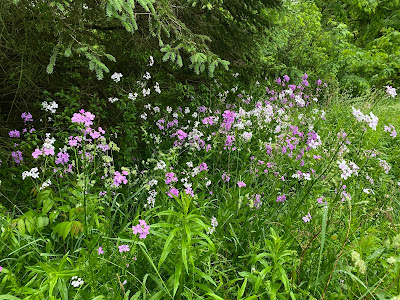 |
| The blank panel |
I barely painted all of 2020. I could feel the anxiety and fear of Covid in the air all around us as well as the violence and the political unrest. The uncertainty. The confusion. Some artists were able to block it all out and paint prolifically. I could barely get into my studio. I felt so stuck. I tried making myself....."just go into the studio for an hour ..........just clean it up..........paint small..........play". All the advice I give my students. Nothing worked. I found creativity though through teaching workshops.
In 2020, I translated my Workshops in Wild Places travel workshops into Stays Home workshops and taught them on Zoom. In those workshops, I suggested nature connection exercises to artists from all over North America and as far away as Australia. It occurred to me that one small contribution I could make to honour the earth is to teach nature-based painting workshops, where artists connect with nature where they live; the backyard or a nearby park or hiking trail. The experiences are then translated into abstract paintings for which we have group feedback sessions. These classes have been particularly exciting and inspiring to me. With being housebound and living in the country, I've spent much more time in the woods behind my house than I have ever done. I appreciate them more. I need them for my well-being.
"We Are Made for These Times" says Clarissa Pinkola Estes in an article in Moon Magazine Originally published in 2001, and again in 2016, the words are just as, if not more powerful than they were earlier."Ours" she says, "is not the task of fixing the entire world all at once but of stretching out to mend the part of the world that is within our reach".
The year turned eventually into 2021, and vaccines began rolling out, and I had an upcoming exhibition prompting me to get into the studio. I was beginning to relax slightly and by February, ideas for paintings began to come to me. I love how that happens. The process is part effort, and the bigger part is mystery. Where do ideas come from? How can we open to ideas for our painting?
“There are things you can’t reach. But
You can reach out to them, and all day long.
The wind, the bird flying away. The idea of god.
And it can keep you busy as anything else, and happier.
I look; morning to night I am never done with looking.
Looking I mean not just standing around, but standing around
As though with your arms open.” Mary Oliver
Jack London says: "Don’t loaf and invite inspiration; light out after it with a club, and if you don’t get it you will nonetheless get something that looks remarkably like it.”
Sort of a caveman-like approach to gathering ideas.
As the year has progressed and through that gestation time, my work took on a new form, flowing with the rhythms of the earth, the cycles, capturing a meditative quality, floating free from restrictions.
 |
| Earth Poem: Breath 36x36" Oil on panel © 2021 Janice Mason Steeves |





Comments
Post a Comment